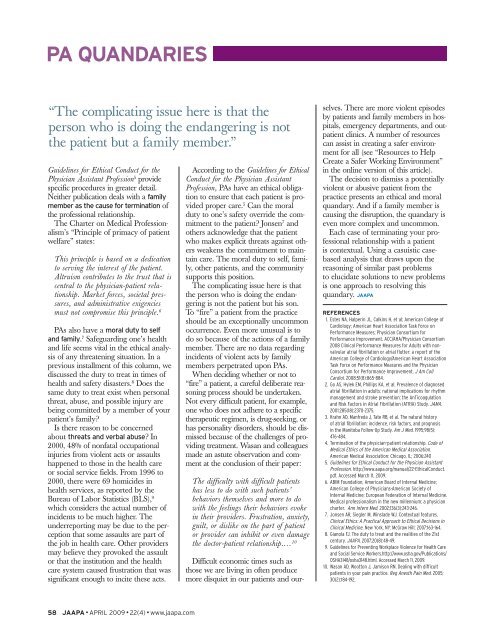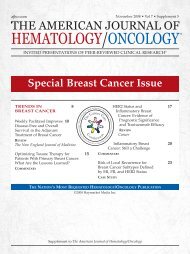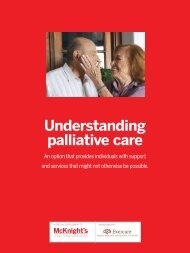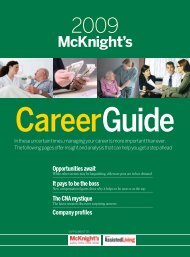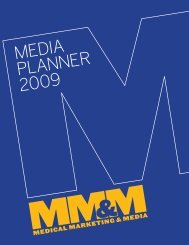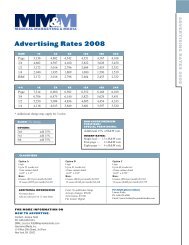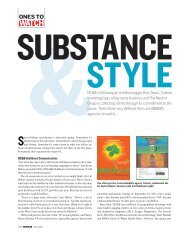Terminating your professional relationship with a patient
Terminating your professional relationship with a patient
Terminating your professional relationship with a patient
Create successful ePaper yourself
Turn your PDF publications into a flip-book with our unique Google optimized e-Paper software.
PA QUANDARIES<br />
“The complicating issue here is that the<br />
person who is doing the endangering is not<br />
the <strong>patient</strong> but a family member.”<br />
Guidelines for Ethical Conduct for the<br />
Physician Assistant Profession 5 provide<br />
specific procedures in greater detail.<br />
Neither publication deals <strong>with</strong> a family<br />
member as the cause for termination of<br />
the <strong>professional</strong> <strong>relationship</strong>.<br />
The Charter on Medical Professionalism’s<br />
“Principle of primacy of <strong>patient</strong><br />
welfare” states:<br />
This principle is based on a dedication<br />
to serving the interest of the <strong>patient</strong>.<br />
Altruism contributes to the trust that is<br />
central to the physician-<strong>patient</strong> <strong>relationship</strong>.<br />
Market forces, societal pressures,<br />
and administrative exigencies<br />
must not compromise this principle. 6<br />
PAs also have a moral duty to self<br />
and family. 7 Safeguarding one’s health<br />
and life seems vital in the ethical analysis<br />
of any threatening situation. In a<br />
previous installment of this column, we<br />
discussed the duty to treat in times of<br />
health and safety disasters. 8 Does the<br />
same duty to treat exist when personal<br />
threat, abuse, and possible injury are<br />
being committed by a member of <strong>your</strong><br />
<strong>patient</strong>’s family?<br />
Is there reason to be concerned<br />
about threats and verbal abuse? In<br />
2000, 48% of nonfatal occupational<br />
injuries from violent acts or assaults<br />
happened to those in the health care<br />
or social service fields. From 1996 to<br />
2000, there were 69 homicides in<br />
health services, as reported by the<br />
Bureau of Labor Statistics (BLS), 9<br />
which considers the actual number of<br />
incidents to be much higher. The<br />
underreporting may be due to the perception<br />
that some assaults are part of<br />
the job in health care. Other providers<br />
may believe they provoked the assault<br />
or that the institution and the health<br />
care system caused frustration that was<br />
significant enough to incite these acts.<br />
58 JAAPA • APRIL 2009 • 22(4) • www.jaapa.com<br />
According to the Guidelines for Ethical<br />
Conduct for the Physician Assistant<br />
Profession, PAs have an ethical obligation<br />
to ensure that each <strong>patient</strong> is provided<br />
proper care. 5 Can the moral<br />
duty to one’s safety override the commitment<br />
to the <strong>patient</strong>? Jonsen 7 and<br />
others acknowledge that the <strong>patient</strong><br />
who makes explicit threats against others<br />
weakens the commitment to maintain<br />
care. The moral duty to self, family,<br />
other <strong>patient</strong>s, and the community<br />
supports this position.<br />
The complicating issue here is that<br />
the person who is doing the endangering<br />
is not the <strong>patient</strong> but his son.<br />
To “fire” a <strong>patient</strong> from the practice<br />
should be an exceptionally uncommon<br />
occurrence. Even more unusual is to<br />
do so because of the actions of a family<br />
member. There are no data regarding<br />
incidents of violent acts by family<br />
members perpetrated upon PAs.<br />
When deciding whether or not to<br />
“fire” a <strong>patient</strong>, a careful deliberate reasoning<br />
process should be undertaken.<br />
Not every difficult <strong>patient</strong>, for example,<br />
one who does not adhere to a specific<br />
therapeutic regimen, is drug-seeking, or<br />
has personality disorders, should be dismissed<br />
because of the challenges of providing<br />
treatment. Wasan and colleagues<br />
made an astute observation and comment<br />
at the conclusion of their paper:<br />
The difficulty <strong>with</strong> difficult <strong>patient</strong>s<br />
has less to do <strong>with</strong> such <strong>patient</strong>s’<br />
behaviors themselves and more to do<br />
<strong>with</strong> the feelings their behaviors evoke<br />
in their providers. Frustration, anxiety,<br />
guilt, or dislike on the part of <strong>patient</strong><br />
or provider can inhibit or even damage<br />
the doctor-<strong>patient</strong> <strong>relationship</strong>.… 10<br />
Difficult economic times such as<br />
those we are living in often produce<br />
more disquiet in our <strong>patient</strong>s and our-<br />
selves. There are more violent episodes<br />
by <strong>patient</strong>s and family members in hospitals,<br />
emergency departments, and out<strong>patient</strong><br />
clinics. A number of resources<br />
can assist in creating a safer environment<br />
for all (see “Resources to Help<br />
Create a Safer Working Environment”<br />
in the online version of this article).<br />
The decision to dismiss a potentially<br />
violent or abusive <strong>patient</strong> from the<br />
practice presents an ethical and moral<br />
quandary. And if a family member is<br />
causing the disruption, the quandary is<br />
even more complex and uncommon.<br />
Each case of terminating <strong>your</strong> <strong>professional</strong><br />
<strong>relationship</strong> <strong>with</strong> a <strong>patient</strong><br />
is contextual. Using a casuistic casebased<br />
analysis that draws upon the<br />
reasoning of similar past problems<br />
to elucidate solutions to new problems<br />
is one approach to resolving this<br />
quandary. JAAPA<br />
REFERENCES<br />
1. Estes NA, Halperin JL, Calkins H, et al; American College of<br />
Cardiology; American Heart Association Task Force on<br />
Performance Measures; Physician Consortium for<br />
Performance Improvement. ACC/AHA/Physician Consortium<br />
2008 Clinical Performance Measures for Adults <strong>with</strong> nonvalvular<br />
atrial fibrillation or atrial flutter: a report of the<br />
American College of Cardiology/American Heart Association<br />
Task Force on Performance Measures and the Physician<br />
Consortium for Performance Improvement. J Am Coll<br />
Cardiol. 2008;51(8):865-884.<br />
2. Go AS, Hylek EM, Phillips KA, et al. Prevalence of diagnosed<br />
atrial fibrillation in adults: national implications for rhythm<br />
management and stroke prevention: the AnTicoagulation<br />
and Risk Factors in Atrial Fibrillation (ATRIA) Study. JAMA.<br />
2001;285(18):2370-2375.<br />
3. Krahn AD, Manfreda J, Tate RB, et al. The natural history<br />
of atrial fibrillation: incidence, risk factors, and prognosis<br />
in the Manitoba Follow-Up Study. Am J Med. 1995;98(5):<br />
476-484.<br />
4. Termination of the physician-<strong>patient</strong> <strong>relationship</strong>. Code of<br />
Medical Ethics of the American Medical Association.<br />
American Medical Association: Chicago, IL; 2006:240<br />
5. Guidelines for Ethical Conduct for the Physician Assistant<br />
Profession. http://www.aapa.org/manual/22-EthicalConduct.<br />
pdf. Accessed March 11, 2009.<br />
6. ABIM Foundation, American Board of Internal Medicine;<br />
American College of Physicians-American Society of<br />
Internal Medicine; European Federation of Internal Medicine.<br />
Medical <strong>professional</strong>ism in the new millennium: a physician<br />
charter. Ann Intern Med. 2002;136(3):243-246.<br />
7. Jonsen AR, Siegler M, Winslade WJ. Contextual features.<br />
Clinical Ethics: A Practical Approach to Ethical Decisions in<br />
Clinical Medicine. New York, NY: McGraw Hill; 2007:163-164.<br />
8. Gianola FJ. The duty to treat and the realities of the 21st<br />
century. JAAPA. 2007;20(8):48-49.<br />
9. Guidelines for Preventing Workplace Violence for Health Care<br />
and Social Service Workers.http://www.osha.gov/Publications/<br />
OSHA3148/osha3148.html. Accessed March 11, 2009.<br />
10. Wasan AD, Wootton J, Jamison RN. Dealing <strong>with</strong> difficult<br />
<strong>patient</strong>s in <strong>your</strong> pain practice. Reg Anesth Pain Med. 2005;<br />
30(2):184-192.


